

Discover Quality Puja Samagri Online


Discover Quality Puja Samagri Online
Yantra
Showing all 9 results
-


Brass Shri Sampuran Vyapar Vriddhi Yantra
₹199.00 -

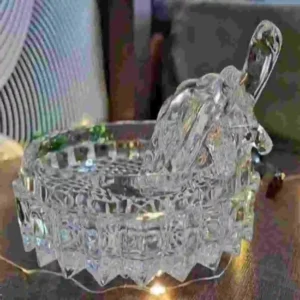
Glass Crystal Turtle Tortoise with Plate
₹199.00 -

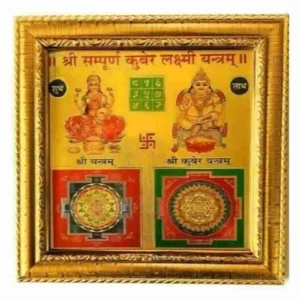
Kuber Laxmi Yantra Pack of 1
₹199.00 -

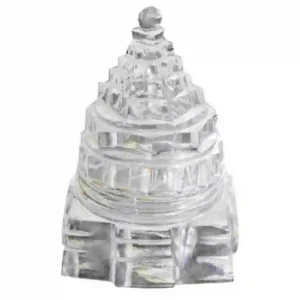
Pure Sphatik Shree Yantra for Pooja Room
₹199.00 -

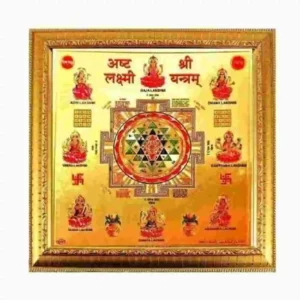
Shri Asth Laxmi Yantra
₹349.00 -

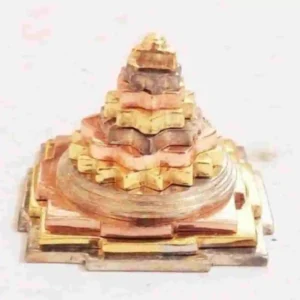
Sri Chakra in Ashtadhatu
₹349.00 -

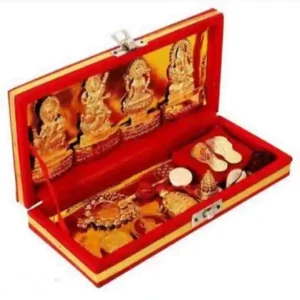
Sri Dhan Laxmi Kuber Yantra
₹199.00 -

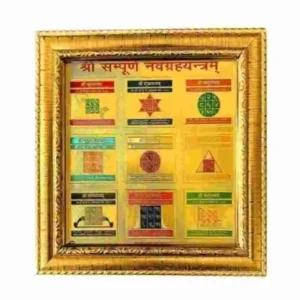
Sri Sampoorna Navgraha Yantra
₹249.00 -

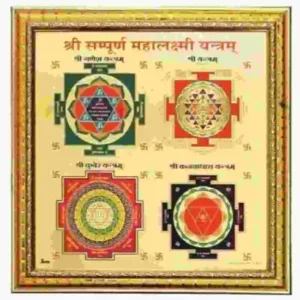
Sri Sampurna Mahalaxmi Yantra
₹249.00
Yantra are sacred geometric symbols which have been an integral part of various spiritual traditions particularly in Hinduism. These mystical diagrams are believed to represent the cosmic energy of a deity and serve as powerful tools for meditation and spiritual transformation. In this comprehensive guide, we will delve into the various types of Yantras, their significance and how they are used in different spiritual practices.
Different Types of Yantra:
1. Shri Yantra:
The Shri Yantra, also known as the Sri Chakra is a revered and complex Yantra representing the goddess Lalita Tripurasundari. Comprising nine interlocking triangles surrounding a central point, it symbolizes the cosmic balance and the union of the divine feminine and masculine energies. It is considered one of the most powerful yantras for prosperity, abundance and spiritual growth.
2. Kuber Yantra:
The Kuber Yantra is associated with Lord Kuber, the deity of wealth and abundance. The Kuber Yantra is designed to attract material prosperity and abundance. By meditating on this Yantra, individuals seek blessings for financial success and the removal of financial obstacles.
3. Saraswati Yantra:
Dedicated to the goddess Saraswati, the embodiment of knowledge, arts and wisdom. the Saraswati Yantra is believed to enhance one’s learning abilities and creative skills. Students and artists often use this Yantra to seek blessings for academic success and creative inspiration.
4. Gayatri Yantra:
The Gayatri Yantra is associated with the Goddess Gayatri who represents the supreme knowledge and wisdom. This Yantra is considered a powerful tool for spiritual evolution, enlightenment, intellectual growth, clarity of thought and the awakening of the higher self. It is often used in meditation to invoke divine wisdom.
5. Baglamukhi Yantra:
The Baglamukhi Yantra is associated with Goddess Baglamukhi, who is believed to possess the power to stop or negate one’s enemies and adversaries. The Baglamukhi Yantra is believed to offer protection against adversaries and legal issues. Devotees use this Yantra to gain victory in debates, legal battles and conflicts.
6. Navgraha Yantra:
The Navgraha Yantra combines the energies of the nine planets in Vedic astrology. It is designed to mitigate the adverse effects of planetary positions in one’s astrological chart. Worshippers use this Yantra to bring balance and harmony to their lives by appeasing the celestial bodies.
7. Surya Yantra:
Dedicated to the Sun god, Surya, this Yantra is believed to harness the powerful energy of the sun. The Surya Yantra is associated with vitality, courage and overall well-being. Devotees seek the blessings of Surya for physical and mental strength.
8. Ganesh Yantra:
The Ganesh Yantra is associated with Lord Ganesha, the remover of obstacles. It is believed to bring success, wisdom and good fortune. It is often worshipped before starting any new venture.
9. Shiva Yantra:
The Shiva Yantra is associated with Lord Shiva, the supreme deity of Hinduism. It is believed to bring inner peace, spiritual awakening and protection from negative influences.
10. Durga Yantra:
The Durga Yantra is dedicated to Goddess Durga, the embodiment of divine feminine energy and power. It is believed to offer protection, courage and victory over obstacles.
11. Meru Yantra:
The Meru Yantra is a three-dimensional representation of the Shri Yantra. It is considered highly auspicious and powerful, capable of bringing harmony, prosperity and spiritual growth.
12. Mahamrityunjaya Yantra:
The Mahamrityunjaya Yantra is associated with Lord Shiva and is believed to offer protection from diseases, accidents and premature death. It is also used for spiritual healing and rejuvenation.
13. Vastu Yantra:
The Vastu Yantra is used to balance the energies of a space according to Vastu Shastra, the ancient Indian science of architecture. It is believed to promote harmony, positivity and well-being in the environment.